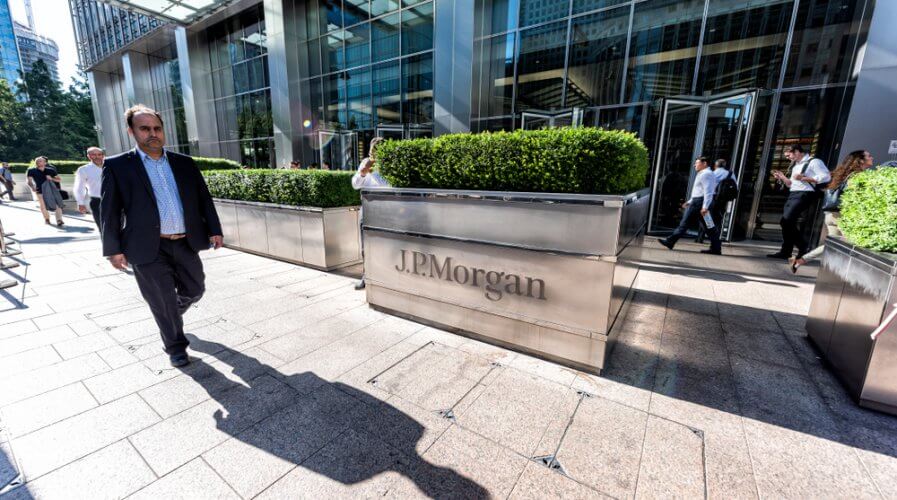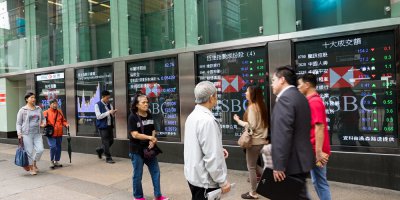
Bankers in the APAC are exploring blockchains but they have options. Source: Shutterstock
Blockchain isn’t the only choice for bankers in the APAC
BLOCKCHAIN, or more technically, distributed ledger technology (DLT) allows developers and solutions creators to build products that factor in trust and transparency for all parties in the ecosystem.
It’s why bankers are excited about the technology, trying to explore use cases for blockchain in their own space.
However, it’s important to remember, blockchain isn’t the only solution for bankers in the APAC — which is what IDC Financial Insights’ AVP Michael Araneta explained to Tech Wire Asia at the 2019 Asian Financial Service Congress.
Truth be told, several banks have already taken the plunge into blockchain solutions and started working on prototypes and moved into the proof of concept stage but the question that Araneta asks them is this: Is the (disruptive) move is really necessary?
One of the biggest blockchain headlines this year was the one about HSBC Bank settling US$250 billion worth of foreign-exchange deals using the technology — but not much was explained in terms of the future use of the technology.
More recently, JP Morgan announced that it has created a new blockchain-based token called the JP Coin that it intends to use to settle transactions instantly between clients of its wholesale payments business.
And Although Araneta doesn’t argue against either use case, neither of the two banks have provided any evidence that a blockchain solution is the only way to bring improvements into the industry.
Araneta does see a strong use case for blockchain technology in the trade finance space.
However, from his work delivering technology transformations in the financial services space, he believes that in order for the technology to really deliver a strong use case, it will not only need more time but also require a consortium approach where a large conglomerate or regulator leads the efforts.
The approach he’s talking about is something we’ve seen in the logistics space recently. The success of a recent blockchain shipping solution developed by Maersk and IBM was the result of a tech-leader and the world’s largest shipping-line driving the change.
According to Reuters, 94 organizations have joined the blockchain platform thus far — and many more are in the process of reviewing, evaluating, and signing up.
The need for a consortium approach and a large number of industry stakeholders buying into the blockchain solution is key because the technology is designed to only function when all kinds of players in the ecosystem are connected, contributing to the system, serving as responsible nodes, and drawing from the combined knowledge of the solution.
The use-case from the logistics industry is a strong reminder to bankers that blockchain is a great solution but it isn’t the only solution — the reason so many players in the logistics industry are concerned about moving to the blockchain is because they’ll be moving away from a system that functions and has no problems at all.
In the banking industry, cross-border professionals are excited about blockchain because it will make things quicker. The traditional system is smooth and there are no hiccups, but in today’s digital age, things are expected to be faster — and bankers see blockchain as the answer.
However, the alternative they have is the SWIFT global payment innovation (gpi). It’s a new standard that promises fast and frictionless cross-border payments, with more transparency, better control for all stakeholders, and low implementation time. In the payments space, it’s the perfect alternative to the blockchain.
Similarly, other blockchain uses cases in the financial services industry have reasonable alternatives that are just as effective and probably more reliable.
So, the question that bankers in the APAC must ask themselves is really, is there really much value that blockchain can bring to them?
Araneta knows first-hand that the Bank of Thailand is working on blockchain-based projects to improve the quarterly issuance of bonds and streamline cross-border payments, but he believes other digital nitiatives bring more value to businesses and citizens alike.
Banks in Thailand are building a strong mobile payments infrastructure and have made QR payments quite a trend in the country, they’re also experimenting with robotic process automation (RPA), and building purely online banks — and those are the projects that deliver maximum value to customers.
At the end of the day, bankers need to really evaluate if the blockchain is for them. It might be what their business and customers need — and that’s a decision the industry will have to think through before they adopt a new solution at-scale.
READ MORE
- The criticality of endpoint management in cybersecurity and operations
- Ethical AI: The renewed importance of safeguarding data and customer privacy in Generative AI applications
- How Japan balances AI-driven opportunities with cybersecurity needs
- Deploying SASE: Benchmarking your approach
- Insurance everywhere all at once: the digital transformation of the APAC insurance industry








